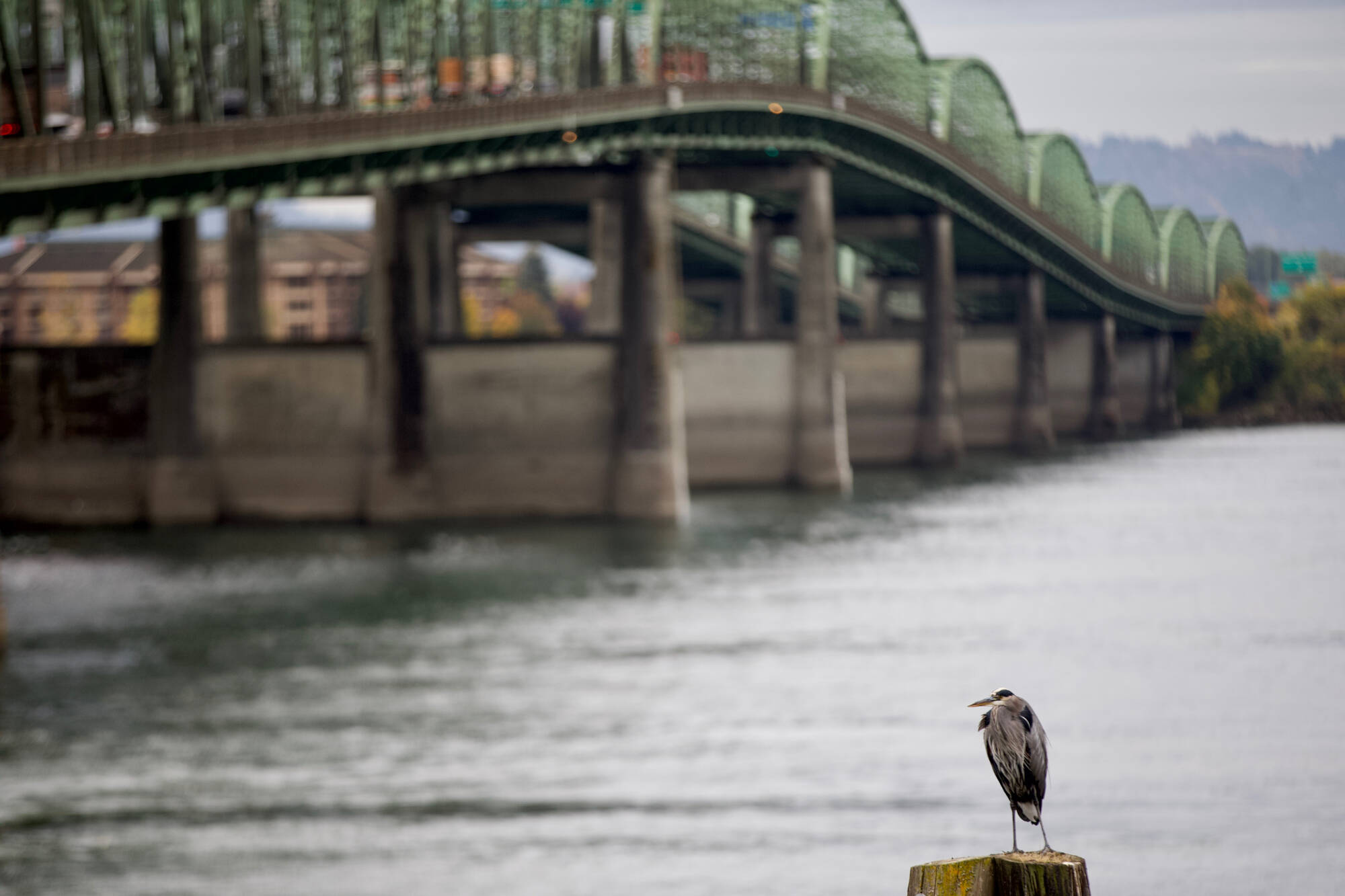The Interstate Bridge Replacement Program’s locally preferred alternative — something that has been years in the making — is circulating to local agencies before it can progress to the next project phase.
Greg Johnson, Interstate Bridge Replacement Program administrator, introduced his presentation on Monday, June 6, evening during a Vancouver City Council workshop by noting the major milestone for the Interstate 5 Bridge project: reaching a consensus on a locally preferred alternative. The plan identifies foundational components of a project option, transit systems and communication between local agencies.
The locally preferred alternative, announced in early May, included one auxiliary travel lane and two shoulder lanes for both north and southbound roadways, as well as three travel lanes in each direction. There hasn’t been a decision on whether the northbound and southbound lanes will be placed side by side or stacked on top of one another.
Tolling made its way into the council’s conversation, as did a recommendation to the Oregon and Washington State Transportation Commission to consider tolling programs for low-income commuters. Variable-rate tolling is not a definite element of the locally preferred alternative, but it was assumed during previous group discussions. On July 21, there will be an executive steering group meeting with legislative groups to seek their endorsement and talk about tolling, Johnson said.
The package extends light rail from the Portland Expo Center to Hayden Island, which would continue across the Columbia River on the I-5 Bridge. It would reach a stop at Columbia Street and Evergreen Boulevard in downtown Vancouver. A partial interchange would allow access to Hayden Island for vehicles traveling from or to Washington.
Mayor Pro Tem Ty Stober drew attention to how people’s behavior may shift with the introduction of tolling and inadvertent consequences that may unfold. Future implications must be considered even though the construction of mega projects, such as the I-5 Bridge, are dependent on tolling revenue, he said.
“It seems, at some point, that there has to be some better analysis of what is a toll going to do to people’s behavior when it comes to that particular exit,” Stober said.
Traffic that flows through the area commonly consists of those who wish to avoid paying a sales tax in Washington, he added. If there is tolling at that exit, it may reduce business on the island. The mayor pro tem urged the council to think how this would influence the city of Vancouver’s sales tax revenue and financial projections.
“Right now, we’re having to fund through property taxes,” Stober continued, “That’s a project for us as a city to understand.”
City Council member Diana Perez asked how tolling would be made equitable for low-income commuters.
The Interstate Bridge Replacement Program does not establish tolling policies, but it can make recommendations to state legislatures and transportation committees who make these decisions. Johnson said the program is gleaning what the best practices are from both national and international tolling programs to gather these suggestions.
Council member Sarah Fox shared her curiosity regarding what the Hayden Island/Marine Drive interchange would look like and where it would be lifted. She also voiced her desire to hear more about what will happen north of the Columbia River as improvements to the interchange are discussed.
Vancouver Mayor Anne McEnerny-Ogle addressed the conversation with a baking analogy.
“At this point, all of those interchanges in my mind are a little raw; they are not completely baked,” she said.
Johnson will return before the council on June 27 with a draft resolution supporting the locally preferred alternative and a draft set of conditions of approval. If the locally preferred alternative is approved, the Interstate Bridge Replacement Program will move forward and draft a supplemental environmental impact statement. This would begin toward the end of summer or early fall and last about 18 months, Johnson said.
If all goes according to plan, construction could begin by late 2025.
“Step two out of 100. We have a long way to go, but we can do it,” McEnerny-Ogle said.


